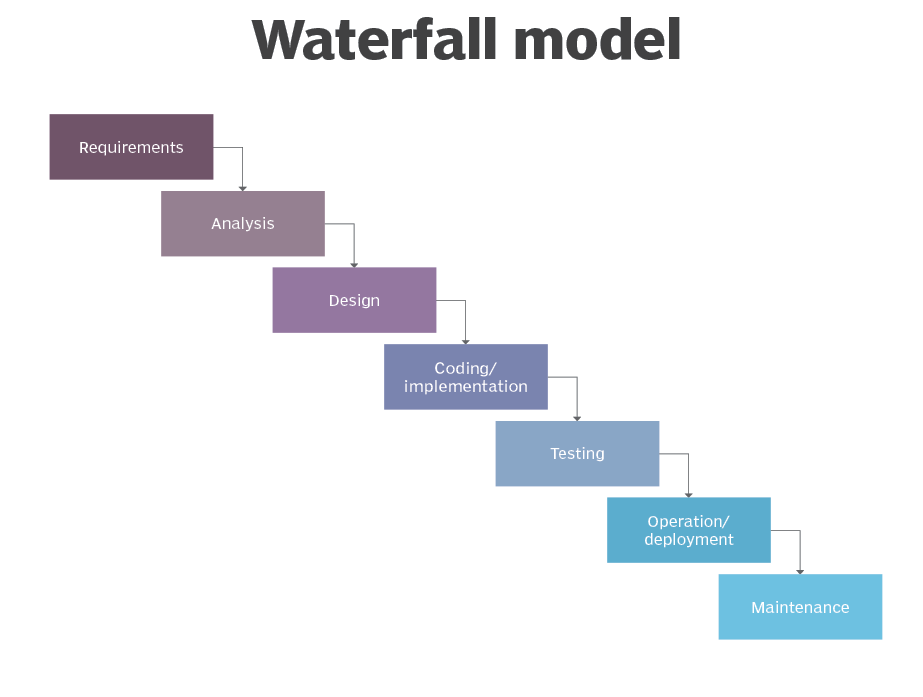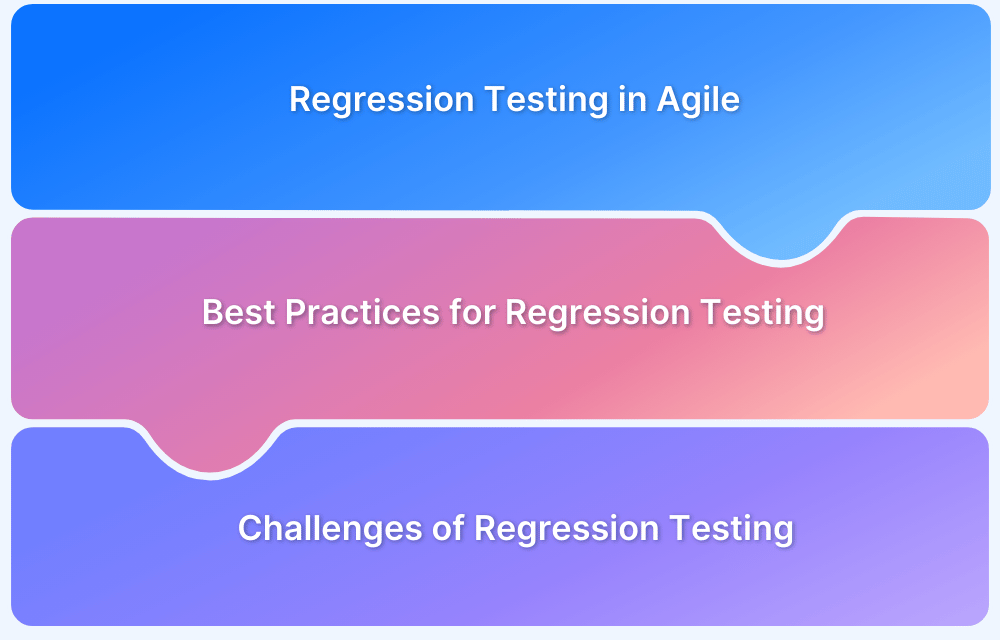Agile methodologies adoption has increased from 37% to 86% between 2020 and 2021. But what is the reason behind the widespread use of Agile development methodologies?
Compared to conventional software development methodologies, Agile testing is continually carried out along with the development. It doesn’t require the developers to finish the development stage and wait for the testers to test the software.
With instant tests carried out during the development phase, it can also improve the efficiency of the development process. The breaking of the sequence in Agile testing methodology is the core reason behind its mass adoption. But apart from this, multiple factors make Agile testing suitable for testers. This guide helps you understand the basics of Agile testing.
What Is Agile Testing? 
Agile is an iterative development methodology that enables teams to deliver value to their customers faster.
But Agile testing is a software testing approach that follows the principles and rules of Agile software development. Because of the rules, it helps new software developers to solve problems with ease.
Also Read: Agile Development Methodologies
Compared to the traditional or waterfall testing model, Agile testing is more flexible, less susceptible to faults, more open to variations/additions, and more client-associated.
The Agile testing method involves testing that can be done at any stage of the development process. You can impart continuous feedback to the development phase from the start.
Unlike the waterfall method, Agile testing is continuous and not sequential.
Besides these basics, using an Agile methodology in the testing phase can be highly beneficial for testers.
Also Read: Debunking Myths about Agile Testing
Why Is Agile Testing Important?
The testing phase in the Software Development Life Cycle (SDLC) is considered a vital step that helps make the software bug free and ready for end-user usage.
So, an Agile testing process can help you bypass major roadblocks like higher testing time and inaccurate test results. You can release the software quickly and improve product quality with accurate results.
Once the testing team identifies the errors, they can fix them faster, so the software will rarely encounter any bugs before the release.
Further, there is a lesser chance of missing a deadline, which increases customer satisfaction and positively impacts customer retention rates.
As the future of software development has shifted towards the Agilemodel in software testing, it’s high time the testers should embrace it.
But you must know about the complete Agile testing life cycle to implement the model in the software testing process.
Also Read: Continuous Integration with Agile
Agile Testing Life Cycle
A standard Agile testing life cycle is essential to ensure you achieve your desired test results accurately. The Agile testing life cycle comprises four main phases:
- Impact assessment: At this stage, QA testers analyze the potential impact created by changing a product section. Doing this before product deployment gives teams the insight they need to make safe changes without impacting the whole product.
- Planning: Every test you run requires accurate scoping. Planning can help you get answers about what metrics you are tracking. Are you highlighting blockers and prioritizing high-severity issues? Or are you accurately tracking bugs that are in progress and resolved? Or something else?
- Daily stand-ups: To ensure the success of your Agile testing, join scrums, host daily stand-ups, and meet with the stakeholders to ensure teams are on track for beta release.
- Reviews: Once a single sprint ends, the testers, developers, and stakeholder review what went well, where they can improve, and what changes need to be made.
Completing these phases effectively can help you implement Agile testing and deliver the best results for your stakeholders.
But apart from the life cycle, you must also know different popular testing methods for end to end testing.
Types of Testing in Agile
Various methodologies have been developed for Agile testing processes.
Here are the four popular testing methods used in Agile testing for achieving the desired results:
- Behavior-Driven Development (BDD)
In Behavior-Driven Development, the developers, testers, and business analysts create “scenarios,” which help in example-focused communication.
These scenarios are framed in a specific format of the Gherkin Given/When/Then syntax:
- Given the initial context
- When an event occurs
- Then ensure outcomes
Different tests and software functionality are built around these scenarios.
- Acceptance Test-Driven Development (ATDD)
Acceptance Test-Driven Development involves the “Three Amigos” approach, where the business customer focuses on the problem, the developer drafts the solution, and the testers analyze what could go wrong.
ATDD helps to verify the product functions as users would expect. The tests are automated, and like the BDD, acceptance tests are drafted first, and then the software functionality is built around the tests.
- Exploratory Testing
In exploratory testing, the test design and execution phases go together. It plays a vital role in Agile projects because of the restricted time for test analysis and the restricted artifacts of user stories.
Exploratory testing focuses on finding out the hidden risks within a product. Bugs missed in the functional tests in TDD (Test-Driven Development) are handled in exploratory testing.
- Session-Based Testing
The session-based test management is used to manage exploratory testing. A session is continuous testing lasting from 60 to 120 minutes.
The test sessions include:
- Survey session (to learn the functionality)
- Analysis session (evaluation of the functional flow)
- Deep coverage (corner cases, different scenarios covered)
These different testing types in Agile methodology aim to release the products within shorter timelines to meet user expectations.
But the users also want the software to be intact, perpetually high-functional, and bug-free that is where automation testing can help you achieve those results.
Automation Testing in Agile
Agile automation testing is an approach to using test automation in Agile. Like most organizations, the goal is to release quality software on time. And test automation can help you achieve the goal.
Test automation also helps in meeting the dynamic demands of the Agile development approach. Automation testing in Agileenables QAs to develop test cases that run automatically when a new code is pushed to the code repository.
A few benefits of test automation include fast, efficient, accurate, and repeatable results.
But automation testing can raise multiple complexities for the QA team, slowing releases and making bug identification difficult.
That’s where products like BrowserStack Automate and App Automate can help you test mobile and web apps at scale without any bottlenecks. BrowserStack allows you to perform automated tests using different frameworks and languages. You can run Selenium, Cypress, Playwright, Puppeteer, Appium, Espresso, and XCUITest seamlessly on 3000+ devices and browsers.
Also, Agile automation testing can be simplified through preparation and having a plan. Preparation is necessary because there will be challenges, like maintaining test scripts and failed tests. Test planning can be your bridge to achieve a successful project with automation in Agile.
Also Read: Continuous Integration with Agile
Test Planning in Agile
Test planning is concerned with implementing a test strategy for each test level. It starts as the initiation of the test process for that level and continues throughout the project until the closure activities for that level are complete.
Test planning involves identifying the test activities and resources required to meet the test strategy objectives. Determine that the test progress is per the plan and assess the achievement of goals.
But apart from test planning, you must be prepared to handle defects in Agile.
Defect Management in Agile
Defect management ensures that defects are either fixed or explicitly ignored. It is used to resolve quality issues found in the software.
You can identify passages (gaps) to reach zero defects using defect management. If defects are not handled, they can lead to customer dissatisfaction and escalate to a higher level.
Apart from defect management, you can also use Agile testing metrics to improve software product quality.
Agile Testing Metrics
It is crucial to understand which metrics are required to improve software testing in an Agile SDLC. Agile Testing metrics consider a specific observational or qualitative attribute of the product. It needs to be analyzed attentively.
Therefore, the role of the QA lead is to minutely choose the Agile testing metrics that give the best result.
Conventionally, all Agile test metrics can be classified into
Type 1: Traditional Agile metrics modified to be relevant to software testing.
Type 2: Specific test metrics applicable to the Agile development environment.
Once you choose the Agile testing metrics, you must know the best practices that can improve Agile testing implementation and results.
Best Practices in Agile Testing
You can use the above-listed information to implement quality Agile testing. These are the best practices that can improve your results:
- Code severity must be preserved (code quality should not be degraded at any cost).
- Repetitive tests are required (ensure that you cover all scenarios and new changes).
- Frequent communication with developers (frequent communication helps understand the functionality and code flow).
- Goal-oriented work approach (stay focused on the desired results).
- Focus on one functionality at a time.
- Use professional tools to avoid slow releases and catch bugs early.
Talking about tools, with over 3000+ desktop browsers and real mobile devices, you can use BrowserStack Automate and App Automate to ensure a seamless user experience with your software.







